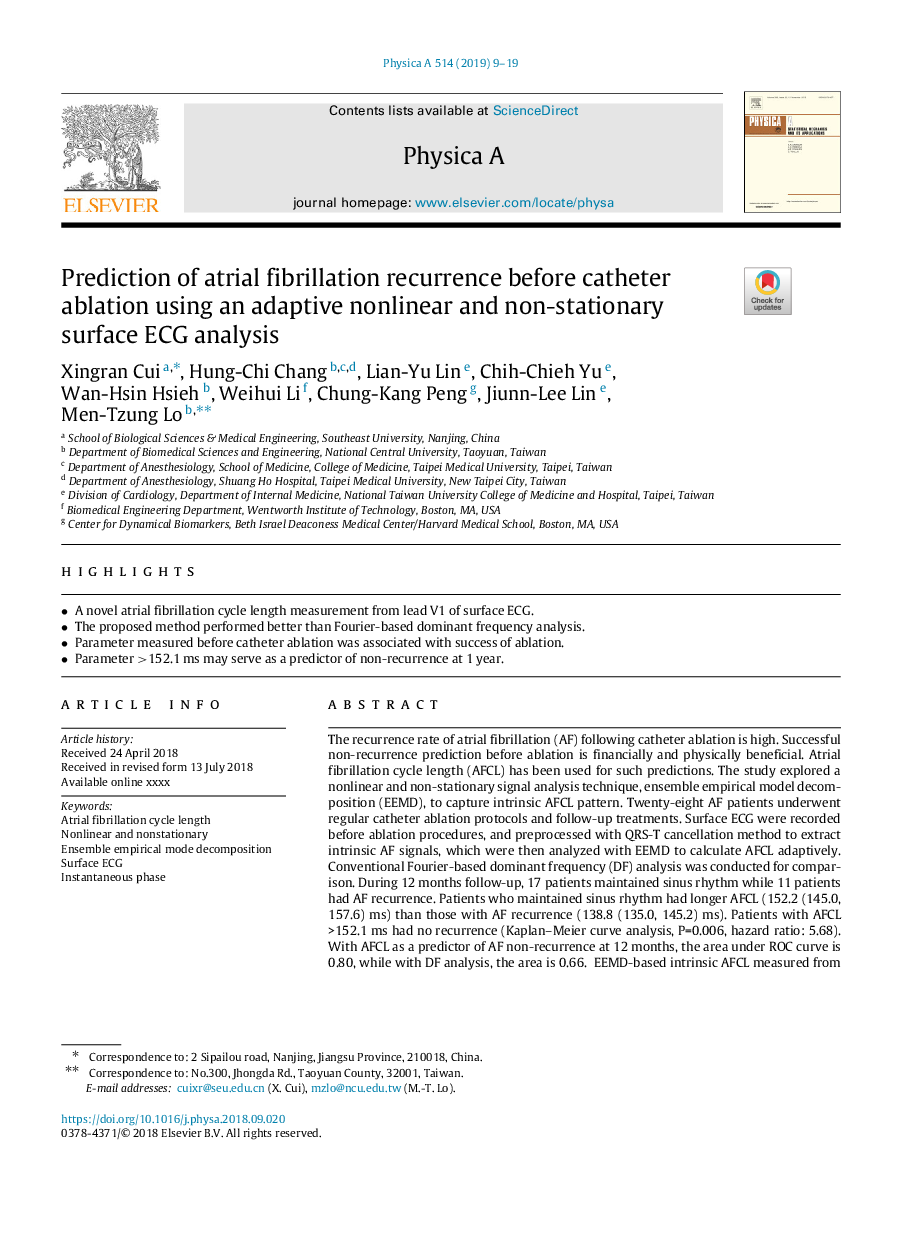| Article ID | Journal | Published Year | Pages | File Type |
|---|---|---|---|---|
| 10226810 | Physica A: Statistical Mechanics and its Applications | 2019 | 11 Pages |
Abstract
The recurrence rate of atrial fibrillation (AF) following catheter ablation is high. Successful non-recurrence prediction before ablation is financially and physically beneficial. Atrial fibrillation cycle length (AFCL) has been used for such predictions. The study explored a nonlinear and non-stationary signal analysis technique, ensemble empirical model decomposition (EEMD), to capture intrinsic AFCL pattern. Twenty-eight AF patients underwent regular catheter ablation protocols and follow-up treatments. Surface ECG were recorded before ablation procedures, and preprocessed with QRS-T cancellation method to extract intrinsic AF signals, which were then analyzed with EEMD to calculate AFCL adaptively. Conventional Fourier-based dominant frequency (DF) analysis was conducted for comparison. During 12 months follow-up, 17 patients maintained sinus rhythm while 11 patients had AF recurrence. Patients who maintained sinus rhythm had longer AFCL (152.2 (145.0, 157.6) ms) than those with AF recurrence (138.8 (135.0, 145.2) ms). Patients with AFCL >152.1 ms had no recurrence (Kaplan-Meier curve analysis, P=0.006, hazard ratio: 5.68). With AFCL as a predictor of AF non-recurrence at 12 months, the area under ROC curve is 0.80, while with DF analysis, the area is 0.66. EEMD-based intrinsic AFCL measured from surface ECG may serve as an effective non-invasive catheter ablation screening tool for AF non-recurrence.
Keywords
Related Topics
Physical Sciences and Engineering
Mathematics
Mathematical Physics
Authors
Xingran Cui, Hung-Chi Chang, Lian-Yu Lin, Chih-Chieh Yu, Wan-Hsin Hsieh, Weihui Li, Chung-Kang Peng, Jiunn-Lee Lin, Men-Tzung Lo,
